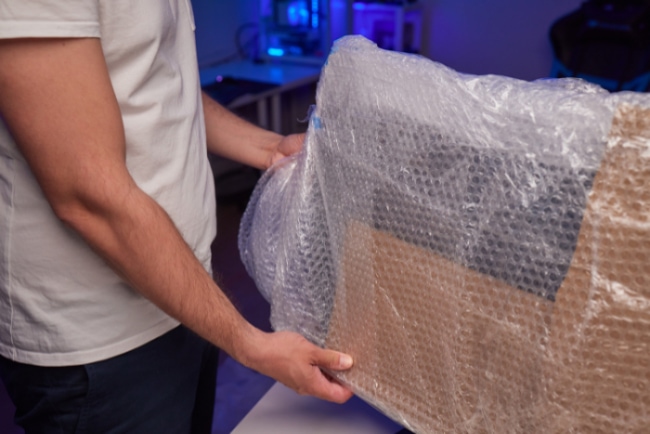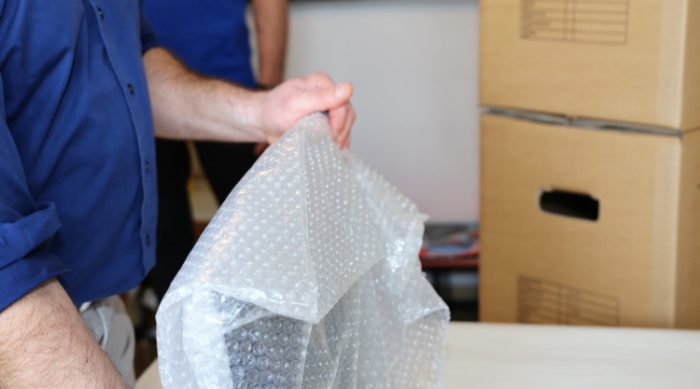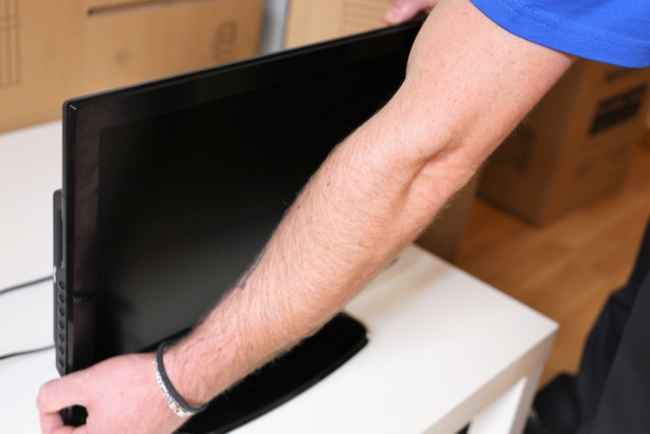How to Safely Transport a Monitor: Packing to Unpacking

Transporting a monitor, whether it’s for a home office, a gaming setup, or a professional workspace, demands careful attention to detail and an awareness of the potential risks involved. Monitors, with their delicate screens and intricate internal components, are not just another piece of hardware; they are often the centerpiece of our digital experiences.
This guide dives into the essential steps and strategies to ensure your monitor arrives at its destination in perfect condition. From the initial preparation to the final setup, each phase is critical.
Whether you’re relocating, upgrading your equipment, or setting up a new space, mastering the art of safely transporting a monitor can save you from unnecessary stress and potential expenses.
Pre-Transportation Preparation
Preparing your monitor for transportation is a crucial step in ensuring its safety. This phase involves understanding the type of monitor you have, assessing its size and weight, and gathering the necessary materials for packing.
Adequate preparation can significantly reduce the risk of damage during transit.
Understanding Monitor Types
Different monitors require distinct handling techniques. For instance, CRT monitors are bulky and heavy, requiring more physical support, whereas LCD, LED, and OLED monitors are lighter but have screens that are more susceptible to damage.
Identifying your monitor type helps in choosing the right packing materials and methods. Awareness of the specific vulnerabilities of your monitor type is essential in preventing damage.
Assessing Monitor Size and Weight
The size and weight of your monitor dictate the type of packaging and handling it will need. Larger monitors, such as those used for gaming or professional graphic design, need more space and stronger support to prevent movement inside the packaging.
Conversely, smaller monitors might require less material but still need sufficient cushioning. Accurately measuring and weighing your monitor ensures that you can select an appropriately sized box and enough protective material.
Gathering Necessary Materials
Having the right materials at hand is crucial for safe transportation. The essentials include bubble wrap or foam sheets for cushioning, a sturdy box that snugly fits the monitor, packing tape for sealing the box, and possibly additional protective elements like corner protectors or anti-static bags.
It’s also wise to have labels and markers ready for clear identification. Selecting high-quality materials plays a vital role in the protection of your monitor.
Proper Packing Techniques
The way a monitor is packed can significantly impact its safety during transportation. Proper packing involves a series of steps that protect the monitor from shocks, vibrations, and pressure.
These techniques cater to different monitor types and sizes, ensuring each one is shielded effectively throughout the journey.
Cleaning and Securing the Monitor
Before wrapping the monitor, it’s important to clean the screen and body to prevent dust particles from scratching the surface during transit. Use a soft, dry cloth for cleaning. If your monitor has a stand or any removable parts, detach them and pack them separately.
Ensure all cords are unplugged, coiled, and secured. This step not only makes the packing process smoother but also prevents any internal movement that could cause damage.
Wrapping and Cushioning
Begin by wrapping the monitor in a soft material, like a foam sheet or bubble wrap, to provide a cushioned barrier. Ensure the screen is completely covered and the corners are well-protected.
For extra safety, wrap the monitor a second time with additional padding. This double layer of protection is particularly important for monitors with larger screens or delicate surfaces.
Boxing and Sealing
Selecting the right box is critical. The box should be slightly larger than the monitor, allowing space for cushioning materials but not so large that the monitor can move around.
Place the wrapped monitor inside the box and fill any gaps with foam peanuts, crumpled paper, or additional bubble wrap to prevent movement. Once the monitor is securely placed, seal the box with strong packing tape.
Label the box as “Fragile” and indicate which side should face up to guide handlers.
Safe Transportation Methods

Transporting a monitor requires careful consideration of the vehicle choice, monitor placement within the vehicle, and driving style. The goal is to minimize the risks of damage from bumps, sudden stops, and turns.
By adopting these safe transportation methods, you can significantly enhance the protection of your monitor during its journey.
Choosing the Right Vehicle
Selecting an appropriate vehicle is essential for the safe transport of your monitor. The vehicle should have enough space to accommodate the monitor without forcing it into an awkward position.
For larger monitors, a vehicle with a spacious trunk or a flat cargo area is ideal. Smaller monitors might fit comfortably in the backseat.
The key is to ensure the monitor can lie flat and is not at risk of falling or being crushed by other items.
Monitor Positioning in the Vehicle
Once the right vehicle is chosen, positioning the monitor correctly within it is crucial. The monitor should be placed flat, preferably on its back, to distribute pressure evenly across its surface.
Avoid placing the monitor screen-side down. If the monitor must be placed upright, secure it against a flat surface and use additional cushioning to prevent it from tipping over.
It’s also important to ensure the monitor isn’t in contact with any hard or sharp objects that could cause damage during movement.
Driving Considerations
Driving style significantly influences the monitor’s safety during transport. It’s advisable to drive smoothly, avoiding abrupt stops, sharp turns, or fast accelerations. Be particularly cautious over bumps or uneven roads.
This careful driving not only protects the monitor but also ensures the safety of all passengers and other items in the vehicle. By remaining mindful of these factors, you can greatly reduce the risks associated with transporting a sensitive device like a monitor.
Unpacking and Setup Post-Transport
After the monitor has been safely transported to its new location, the process of unpacking and setting it up is equally important to maintain its condition. This stage involves careful unpacking, thorough inspection for any potential damage, and proper setup to ensure the monitor functions as expected in its new environment.
Careful Unpacking
Begin by gently removing the monitor from the vehicle and placing it in a stable, uncluttered area. Carefully cut the packing tape and open the box, being mindful not to use sharp objects that could damage the monitor.
Remove the cushioning materials and gently lift the monitor out of the box. If the monitor has been wrapped in layers, remove each layer cautiously to avoid any strain on the screen or the frame.
Inspection for Damage
Once unpacked, conduct a detailed inspection of the monitor. Look for any signs of damage such as cracks, scratches, or dents.
Check the screen for any irregularities in display or color. It’s also crucial to reconnect any detached parts like stands or cables and ensure they fit as they should.
This step is vital to identify any issues that may have occurred during transportation and address them promptly.
Setting Up the Monitor
After confirming that the monitor is in good condition, proceed to set it up in its new location. Position the monitor at a comfortable viewing angle and distance, ensuring it’s stable and secure on its stand or mounting bracket.
Reconnect all cables, including power and input cables, and turn on the monitor to verify it’s functioning correctly. Adjust the settings like brightness, contrast, and resolution as needed for optimal viewing in the new environment.
Proper setup not only enhances your viewing experience but also contributes to the longevity and performance of your monitor.
Special Considerations

While the general guidelines for transporting a monitor cover most scenarios, there are special considerations that may apply in certain situations. These include long-distance transportation, the role of insurance and liability, and the decision to use professional transportation services.
Addressing these factors ensures your monitor’s safety in more complex or high-risk circumstances.
Long-Distance Transport
Transporting a monitor over long distances, such as during an interstate move or international shipping, requires additional precautions. In these cases, the monitor will be in transit for a longer period and may be handled by multiple parties.
It is advisable to use extra protective packaging, including rigid foam panels and heavy-duty boxes. Consider using pallets for very large monitors to prevent them from being moved improperly.
It’s also important to check the monitor periodically during stops, if possible, to ensure it remains secure.
Insurance and Liability
Understanding the insurance and liability aspects is crucial, especially when transporting expensive or professional-grade monitors. Check if your current insurance policy covers the transport of electronic equipment and consider purchasing additional insurance if necessary.
This is particularly important when using third-party transport services, as their liability may be limited. Keeping documentation of the monitor’s condition before and after transport can be helpful in case of any disputes or insurance claims.
Professional Transportation Services
In certain scenarios, such as when dealing with exceptionally large or multiple monitors, it might be wise to consider professional transportation services. These services offer specialized equipment and expertise in handling delicate electronics.
When selecting a service, research their experience with electronics, review their insurance policies, and ask about their packing and handling procedures. Professional services, while more costly, provide peace of mind and reduce the risk of damage during transportation, making them a valuable option for high-end or sensitive monitors.
Common Mistakes to Avoid
Even with careful planning and execution, certain common mistakes can compromise the safety of your monitor during transportation. Being aware of these pitfalls and knowing how to avoid them is key to ensuring a smooth and damage-free transit for your monitor.
This part of the guide highlights these typical errors and offers practical advice on how to sidestep them.
Insufficient Packing Material
One of the most frequent mistakes is not using enough cushioning or protective materials. Monitors are delicate and require ample padding to absorb shocks and vibrations during transit.
Ensure that the monitor is wrapped in multiple layers of bubble wrap or foam and that the packing box is filled with enough cushioning materials to prevent any movement.
Using Inappropriate Boxes
Using a box that is too large or too small for the monitor can lead to damage. A box that is too large allows the monitor to move and potentially collide with the box’s sides.
Conversely, a box that is too small can exert pressure on the monitor, especially on the screen. Choose a box that fits the monitor snugly with enough room for protective padding.
Overlooking Monitor Positioning
Incorrectly positioning the monitor in the vehicle is a common oversight. Monitors should not be placed with pressure on the screen or in a position where they can fall over or slide.
Ensure the monitor is laid flat, preferably on its back, and is well-secured in the vehicle.
Neglecting to Label the Package
Failing to label the package as fragile is a simple yet significant mistake. Labels inform handlers to treat the package with extra care.
Clearly mark the package with “Fragile” and “This Side Up” labels to indicate how it should be handled and positioned.
Rushing the Unpacking Process
Rushing through the unpacking process can lead to accidental drops or mishandling. Take your time to carefully remove the monitor from its packaging, especially if it’s wrapped in multiple layers or secured with a lot of tape.
Patience during unpacking is just as important as careful packing.
Conclusion
Transporting a monitor safely requires attention to detail and a methodical approach at every stage. From the initial preparation, which includes understanding your monitor’s specific needs, to the final steps of unpacking and setup, each phase is crucial for ensuring the monitor’s protection.
Proper packing techniques, choosing the right transportation method, and special considerations for long-distance moves or the use of professional services are key components of this process. Being aware of common mistakes and how to avoid them further enhances the safety of your monitor during transit.
With these guidelines, you can confidently move your monitor, knowing that you have taken all the necessary steps to protect your valuable equipment. Whether relocating, upgrading, or simply rearranging, the peace of mind that comes with knowing your monitor is safely transported is invaluable.



